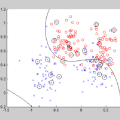Automated AI classifiers should be able to defer the prediction to a human decision maker to ensure more accurate predictions. In this work, we jointly train a classifier with a rejector, which decides on each data point whether the classifier or the human should predict. We show that prior approaches can fail to find a human-AI system with low misclassification error even when there exists a linear classifier and rejector that have zero error (the realizable setting). We prove that obtaining a linear pair with low error is NP-hard even when the problem is realizable. To complement this negative result, we give a mixed-integer-linear-programming (MILP) formulation that can optimally solve the problem in the linear setting. However, the MILP only scales to moderately-sized problems. Therefore, we provide a novel surrogate loss function that is realizable-consistent and performs well empirically. We test our approaches on a comprehensive set of datasets and compare to a wide range of baselines.
翻译:自动化人工智能分类器应该能够向人类决策者让渡预测,以确保更准确的预测。在本研究中,我们共同训练分类器和拒绝器,拒绝器决定每个数据点是由分类器还是人类来预测。我们表明,即使存在零误差的线性分类器和拒绝器(实现设置),先前的方法可能无法找到低误差的人工智能系统。我们证明了当问题可实现时,即使在线性设置中获得低误差的线性对也是NP难的。为了补充这个负面结果,我们提供了一个混合整数线性规划(MILP)公式,可以在线性设置中最优地解决问题。然而,MILP仅适用于中等大小的问题。因此,我们提供了一种新颖的代理损失函数,它与实现一致并在经验上表现良好。我们在全面的数据集上测试了我们的方法,并与各种基线进行比较。



